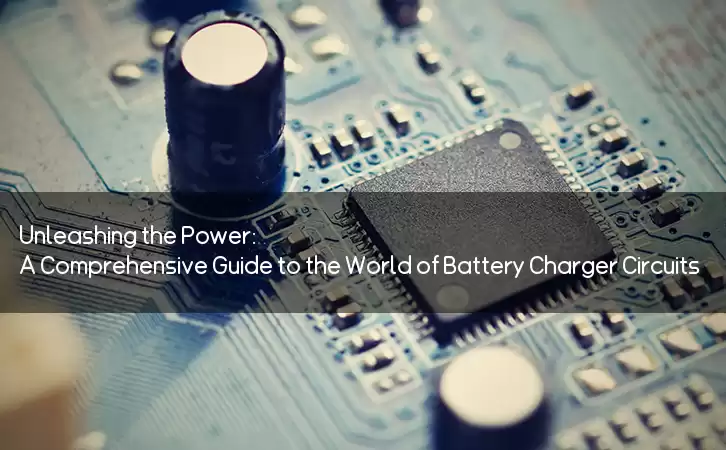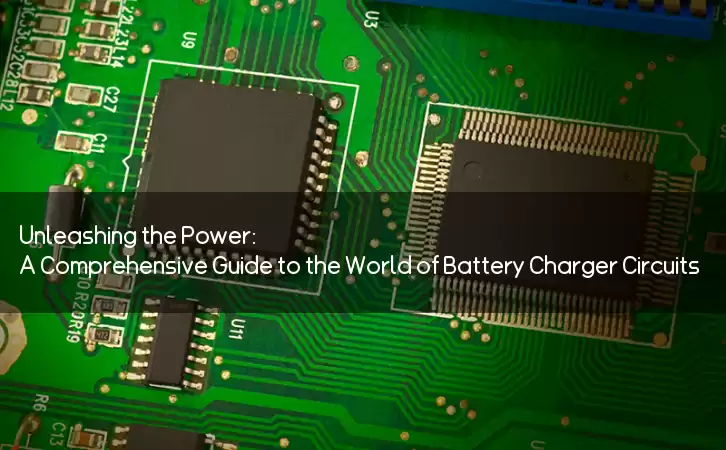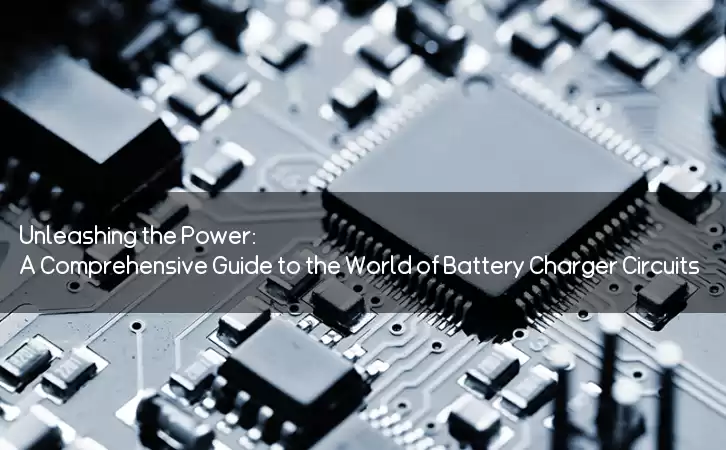Information Center
Unleashing the Power: A Comprehensive Guide to the World of Battery Charger Circuits
Published:2023-06-22 00:36:10 Author:Green WCND Views:73Battery Charger Circuit: A Comprehensive Guide

A battery charger circuit is a device designed to recharge batteries by supplying electric energy to them. It is an essential component of most electronic devices that run on rechargeable batteries, such as smartphones, laptops, power banks, and electric vehicles.

The main objective of a battery charger circuit is to convert an input voltage source (AC mains, solar panel, wind turbine, etc.) into a suitable charging voltage and current to the battery. A typical battery charger circuit consists of several components, such as transformer, rectifier, filter, voltage regulator, and control circuit.

The transformer is responsible for stepping down or stepping up the voltage of the input source to match the battery’s charging voltage. The rectifier converts the AC voltage from the transformer to a DC voltage, which provides the charging current to the battery. The filter eliminates any unwanted signals or noise from the DC voltage. The voltage regulator controls the charging voltage to prevent overcharging or undercharging of the battery. The control circuit monitors the charging process and controls the charger’s operation, such as switching the charging mode, displaying the charging status, and protecting the charger from overloading or short circuit.
Types of Battery Charger Circuit:
There are different types of battery charger circuits available in the market, depending on the type of battery, charging time, efficiency, cost, and application. Some of the popular types are:
1. Linear Charger Circuit: It is the simplest and cheapest charger circuit that uses a linear voltage regulator to control the charging voltage. It is suitable for low-power applications and lead-acid batteries.
2. Switching Charger Circuit: It is a complex and expensive charger circuit that uses a switching regulator to control the charging voltage. It is suitable for high-power applications and lithium-ion batteries.
3. Pulse Charger Circuit: It is a unique charger circuit that uses a pulse generator to deliver a series of pulses to the battery. It is suitable for deep-cycle batteries and enhances battery life.
4. Solar Charger Circuit: It is a charger circuit that uses a solar panel as an input source to charge the battery. It is suitable for outdoor and remote applications where a conventional AC power source is not available.
5. Wireless Charger Circuit: It is an innovative charger circuit that uses electromagnetic induction to charge the battery without any physical connection. It is suitable for smartphones and wearables.
Advantages and Applications of Battery Charger Circuit:
A battery charger circuit has several advantages and applications, such as:
1. It prolongs the battery life by preventing overcharging and undercharging.
2. It saves energy and cost by utilizing renewable energy sources, such as solar, wind, and hydro power.
3. It enhances the portability and convenience of electronic devices by providing a wireless or portable charging solution.
4. It reduces the environmental impact of electronic waste by promoting battery recycling and reuse.
5. It enables the development of sustainable and smart cities by powering electric vehicles and smart grids.
Conclusion:
In conclusion, a battery charger circuit is a crucial component of modern electronics that plays a significant role in enabling a sustainable and smart future. It is a complex and diverse technology that requires expertise and innovation to develop efficient, reliable, and safe charging solutions. As consumers, it is essential to choose the right charger circuit for our devices based on the compatibility, efficiency, and safety standards. As innovators, it is our responsibility to design and develop cutting-edge charger circuits that can meet the growing demand for clean energy and connectivity.
Power Adapter Design and Customization Guide for Portable Electric KettlesI. Common Design Types for Portable Electric Kettle Power AdaptersPortable electric ke···
I. Common Design Types of Power Adapters External Independent Type (Most Common) Design: A standalone adapter (e.g., "black brick") connected to the p···
Handheld Vacuum Cleaner Power Adapter Selection GuideIntroductionHandheld vacuum cleaners have become a mainstream tool for household cleaning due to their port···
Drill Power Adapter Selection Guide.drill-container { font-family: Arial, sans-serif; line-height: 1.6; max-width: 800px; margin: 0 auto; padding: 20px; } .dril···





